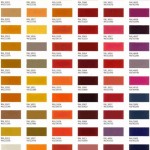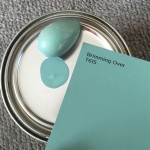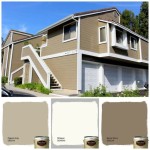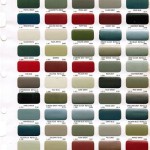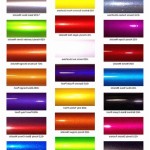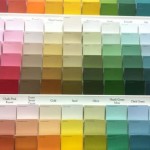How To Use Paint Color Matcher Tools to Find The Perfect Match
Achieving a cohesive and aesthetically pleasing color scheme in any design project, be it interior decorating, crafting, or even industrial applications, often hinges on the ability to accurately replicate or match existing colors. Fortunately, technological advancements have led to the development of paint color matcher tools, which simplify this process significantly. These tools, available in various forms from handheld devices to smartphone applications and online platforms, offer a convenient and efficient means of identifying and reproducing specific colors. Understanding how to effectively use these tools, their capabilities, and limitations, is crucial for any individual or professional seeking precise color matching.
The success of any color-matching endeavor is contingent upon proper technique, understanding the underlying technology, and being aware of environmental factors that might influence the accuracy of the results. This article will provide a comprehensive guide on how to effectively utilize paint color matcher tools to achieve the perfect match, covering different types of tools, best practices for operation, and factors influencing the final result.
Understanding Different Types of Paint Color Matcher Tools
Paint color matcher tools are diverse, ranging from highly sophisticated laboratory-grade spectrophotometers to readily accessible smartphone applications. Each type offers varying degrees of accuracy, portability, and ease of use.
Spectrophotometers: These are the gold standard in color matching. Spectrophotometers measure the spectral reflectance of a color sample across the visible light spectrum. The resulting data is then compared to internal databases of paint colors, precisely identifying the closest match. These devices are primarily used by paint manufacturers, professional color consultants, and in industries requiring stringent color control. Their accuracy is unmatched, however they are typically expensive and require some level of technical expertise to operate and interpret the results.
The operation of a spectrophotometer typically involves placing the device directly against the surface of the color sample. The device then emits light, which reflects off the surface and is analyzed by the internal sensors. The captured data is then processed and compared to a vast library of pre-existing color formulations. The result is a highly accurate match, often capable of identifying the specific paint brand and color code.
Colorimeters: Colorimeters are a more affordable alternative to spectrophotometers. While they also measure color, they do so using a simplified method that relies on three color channels (red, green, and blue – RGB) to represent the color. While less accurate than spectrophotometers, colorimeters are still valuable tools for many applications, particularly for professionals requiring portability and quick color matching on the go.
Colorimeters are generally more user-friendly than spectrophotometers. They commonly connect to a computer or mobile device, allowing the user to view the color data and compare it to a color palette. The software associated with a colorimeter typically includes features for adjusting the color values to compensate for variations in lighting conditions or surface textures.
Handheld Paint Scanners: These devices, usually battery-powered and portable, are specifically designed for paint matching. They often incorporate LED lighting to ensure consistent illumination during color measurement. Handheld scanners often connect to smartphone apps, allowing users to browse extensive paint databases and order matched paint samples directly.
Handheld paint scanners simplify the color matching process. The user simply places the scanner against the surface of the color sample and presses a button. The device then captures the color data and transmits it to the paired smartphone app. The app will then display the closest matching paint colors from various brands, along with the corresponding color codes. Some apps also allow users to save the matched colors for future reference or to create custom color palettes.
Smartphone Applications: These apps leverage the built-in cameras and sensors of smartphones to analyze colors. The accuracy can vary significantly depending on the quality of the smartphone camera and the lighting conditions. While not as precise as dedicated devices, smartphone apps are convenient for quick color identification and brainstorming, particularly when a professional-grade tool isn't readily available.
Smartphone applications for color matching vary in functionality. Some apps allow the user to simply point the camera at the color sample and the app will automatically identify the closest matching color. Other apps require the user to take a photo of the color sample and then manually select the area to be analyzed. Regardless of the specific method, the app will typically display the closest matching paint colors from various brands, along with the corresponding color codes. It's crucial to calibrate these apps according to the manufacturer's instructions and to ensure consistent lighting conditions during use to maximize accuracy.
Best Practices for Using Paint Color Matcher Tools
Regardless of the type of paint color matcher tool being used, following best practices is essential to ensure accurate and reliable results. This includes proper preparation, understanding lighting conditions, and correctly operating the device.
Surface Preparation: The surface being scanned should be clean and free of dirt, dust, and any loose debris. Any imperfections on the surface can distort the color reading and lead to inaccurate results. For painted surfaces, ensure the paint is fully cured and dry before attempting to match the color. If matching color on fabric or other textured materials, try to smooth out the surface as much as possible to provide a consistent reading.
Lighting Conditions: Lighting plays a crucial role in color perception. Avoid direct sunlight or strong artificial lighting, as these can significantly alter the color appearance. Ideally, use natural daylight or consistent, diffused artificial light. If using artificial light, ensure it's a full-spectrum light source with a color rendering index (CRI) of 90 or higher, as this will provide a more accurate representation of the color. For consistent results, always scan the color sample under the same lighting conditions throughout the matching process.
Calibration and Settings: Before using any paint color matcher tool, thoroughly read the manufacturer's instructions and calibrate the device according to their recommendations. Calibration ensures the device is accurately measuring color and compensates for any internal variations. Many devices also have adjustable settings, such as the ability to select a specific color palette or to compensate for surface texture. Familiarize yourself with these settings and adjust them accordingly to achieve the best results.
Proper Scanning Technique: Ensure the paint color matcher tool is held firmly against the surface during scanning. Any gaps between the device and the surface can allow ambient light to interfere with the reading. Follow the manufacturer's instructions regarding the scanning motion. Some devices require a slow, steady scan across the surface, while others require a single, stationary reading. Take multiple readings from different areas of the surface to account for any variations in color. Average the results to obtain a more accurate representation of the overall color.
Understanding Color Codes: Paint color matcher tools typically provide the color match as a series of color codes, such as RGB (red, green, blue), CMYK (cyan, magenta, yellow, black), or hexadecimal codes. Understanding these codes is crucial for communicating the color information to paint stores or for using the color in digital applications. RGB codes are commonly used for displaying colors on screens, while CMYK codes are used for printing. Hexadecimal codes are used in web design to specify colors using alphanumeric characters. Knowing the purpose of each code will ensure the correct color is reproduced in the desired medium.
Factors Influencing Color Matching Accuracy
While paint color matcher tools are valuable assets, it is crucial to understand that a perfect match is not always guaranteed. Several factors can influence the accuracy of the results, including the tool's limitations, the age and condition of the existing paint, and the substrate the paint is applied to.
Tool Limitations: Each type of paint color matcher tool has its own inherent limitations. Smartphone apps, for example, are typically less accurate than dedicated devices due to the limitations of smartphone cameras and sensors. Even high-end spectrophotometers can have limitations, particularly when matching complex or metallic colors. Be aware of the limitations of the tool being used and adjust expectations accordingly. For critical color matching applications, it may be necessary to consult with a professional color consultant or to use a laboratory-grade spectrophotometer.
Existing Paint Condition: The age and condition of the existing paint can significantly affect its color. Over time, paint can fade, yellow, or become discolored due to exposure to sunlight, moisture, or other environmental factors. This can make it difficult to match the original color. Even if the paint color matcher tool provides a seemingly perfect match, the new paint may not look identical to the existing paint. In these cases, it may be necessary to repaint the entire surface to ensure a uniform color appearance.
Substrate Influence: The substrate the paint is applied to can also influence its color. Different materials, such as wood, metal, or drywall, can absorb or reflect light differently, altering the perceived color. This is particularly true for porous surfaces, which can absorb some of the paint, leading to a slightly darker color. When matching paint, it is important to consider the substrate and to adjust the color accordingly. Applying a primer to the substrate before painting can help to minimize the influence of the substrate on the final color.
Sheen Levels: The sheen of the existing paint will affect how the color is perceived. Matte finishes absorb more light and appear less vibrant, while gloss finishes reflect more light and appear more intense. Matching the sheen is as important as matching the color. A color match may appear off if the sheen is significantly different than the original coating. When specifying the paint for the matched color, pay close attention to the sheen level and choose a product that closely matches the sheen of the existing paint.
Batch Variations: Even within the same paint brand and color code, there can be slight variations between different batches of paint. This is due to variations in the raw materials used to make the paint. To minimize the risk of batch variations, it is always best to purchase enough paint to complete the entire project from the same batch. If this is not possible, try to blend the paint from different batches together before applying it to the surface.
By understanding these factors and taking appropriate precautions, users can significantly improve the accuracy of their color matching efforts and achieve the desired aesthetic results. While paint color matcher tools offer a convenient and efficient means of identifying and reproducing specific colors, it is important to recognize their limitations and to use them in conjunction with proper technique and an understanding of the underlying principles of color science.

Microsoft Paint S Color Picker Find The Perfect Match

The 6 Best Tools For Colour Matching Inspirations Paint

How To Match Paint Colors Accurately

The Colorimeter Scans Paint And Provides Exact Color Match
How Can A Machine Match Paint Color Perfectly Howstuffworks

Color Match Tool With Paint Matching App Lets You Id Any Hue Cult Of Mac

Color Matching Device Identify And Match Paint

Color Matcher

6 Color Matching Techniques For WordPress Web Designers
:max_bytes(150000):strip_icc()/ms-paint-cans-getty-69bd431c70514a35ad5d4616169c4f9a.jpg?strip=all)
How To Identify And Match Any Paint Color According Experts
Related Posts

